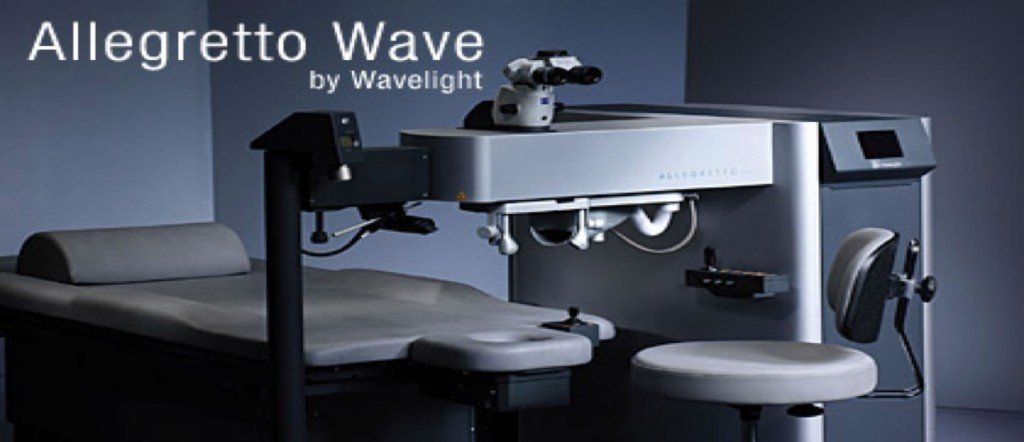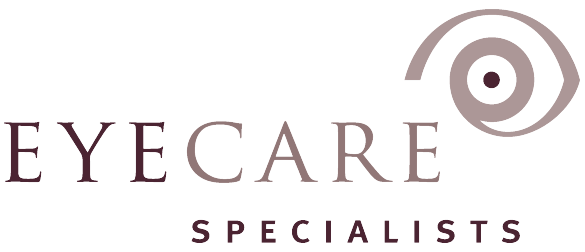Technology
We use World-Class, State-of-the-Art Laser Technology, called the ALLEGRETTO WAVE®, one of the fastest, safest lasers on the market today to treat our patients.
HAVE QUESTIONS?
Ask one of our Eye Care Experts, obligation free. Call us today at 781-769-8880 or CLICK HERE to fill out our Online Contact Form.
ALLEGRETTO WAVE®
ALLEGRETTO WAVE®’s new approach to laser vision correction decreases problems associated with older generation lasers, such as night vision reduction, glare, and halos. The ALLEGRETTO WAVE® also creates superior clinical results with vast improvement in visual acuity.
We are proud to be one of the few practices in the Boston area to use the Intralase LASIK procedure for an “All Laser LASIK” method, which produces some of the best results our patients have ever experienced in laser vision correction. The IntraLase method uses a laser to produce a layer of tiny bubbles, which gently lift and separate the tissue to create a corneal flap, rather than traditional LASIK procedures which use a blade to create a corneal flap. The custom Allegretto Wave Eye-Q Excimer Laser technology then reshapes the underlying cornea. Once the flap is made and the cornea reshaped, the surgeon will move the flap back into place, where it resets in the cornea without the need for stitches.
Allegretto Wave Laser
The Allegretto Wave excimer laser provides shorter recovery times, innovative and reliable eye tracking, and a clear ergonomic concept. An enhanced pulse frequency of 400 Hz allows for fast treatments which result in better vision and significantly less chance of glare and halos. At Eye Care Specialists, we believe nothing is more precious than your vision, which is why we treat our LASIK and PRK patients with the Allegretto Wave Eye-Q excimer laser. Dr. George Frangieh trusts that you will not find a more technologically advanced vision correction center anywhere else.
How does the Allegretto Wave Laser provide the patient both safety and reliability?
Perfect pulse technology represents a new approach to laser vision correction – it accounts for speed, precision, and safety in the Allegretto Wave laser and offers improvements that are revolutionary in the field. Smart Energy Control measures and adjusts energy levels in the laser pulse from creation to delivery. High-speed eye tracking charts the eye’s movement 200 times per second. As a result, every laser pulse is completely controlled and accurate, achieving the most accurate level of correction possible.
You can have peace of mind that the amount of energy in the laser has been calibrated to exactly the right level. After the beam has been created, it passes through three checkpoints on its way to your eye. At each of these points, the energy level is checked and adjusted if necessary, ensuring that the beam is perfectly attuned at its destination.
The Allegretto Wave laser is essentially a precise, controlled beam of energy, which translates to heat. To make sure that this beam never causes any sort of adverse heating effect on the cornea, Allegretto Wave’s Perfect Pulse Technology places the laser pulses in such a way that only every fifth pulse overlaps. Not only does this prelude unwanted heating effects, it is one of the ways that the Allegretto Wave achieves a rounder, more natural corneal surface than many other lasers used for vision correction.
Due to the remarkable speed of both the eye and the Allegretto Wave procedure, the laser beam needs to be constantly and minutely adjusted to the position of the eye at any given time. Every 4-6 milliseconds, the eye’s location is measured and the internal mirrors of the Allegretto Wave are automatically aligned. Right before the pulse is released, a second check is made to confirm that the eye has not moved. This happens 200 times every second, once for every laser pulse released. If, at any time, the eye moves too quickly to be measured or moves out of range, the laser will stop and wait for the eye to move back into position.
Currently, the Allegretto Wave is the fastest vision correction laser available in the Unites States. At 400 laser bursts per second, it only takes about four seconds of treatment to correct one diopter. Of course, spending less time under the laser means lass stress and discomfort for the patient.
One of the most innovative features of the Allegretto Wave is the way in which it uses wavefront optimized technology to automatically compensate for the curvature of the cornea. In earlier laser correction systems, the “optical zone,” or area of correction, was centered on the front of the cornea; the result was a flattened circular area that ended with an abrupt edge, causing unwanted side effects like poor night vision, glare, and halos.
The Allegretto Wave changes all that. The Allegretto Wave sends extra pulses to the peripheral corneal area in order to compensate for the angle of the laser beam. In this manner, the aspherical shape of the cornea is preserved to a degree that older lasers simply could not achieve. This compensation, combined with the incredibly small, 1mm size of the laser, produces a smooth, effective optical zone that results in what can only be described as vision like never before.
Imagine a glass ball. If you took a flashlight and aimed it directly at the top of the ball, the light would form a circular shape on the surface of the ball. If you now aimed the flashlight towards the side of the ball, the light would form an elliptical shape and not seem as bright anymore. This is because the same amount of light is suddenly distributed over a larger area and some of the light is reflected away due to the angled surface of the glass ball.
Because the Allegretto Wave provides custom vision correction with the standard Wavefront Optimized Treatment, the majority of patients myay not benefit from a wavefront-guided treatment. However, after an extensive analysis of your vision, Dr. Frangieh will determine whether this treatment will be helpful with the overall laser vision correction outcome.
The wavefront-guided treatment involves an additional step where the results of a detailed scan with the WaveLight Allegretto Analyzer provides further measurements for the treatment plan, the data is validated , and then it is transferred to the ALLEGRETTO WAVE LASER SYSTEM. Next, the final treatment profile is calculated and then the laser begins.
If you are a candidate for wavefront-guided treatment, you should be pleased to know that patient outcomes from our clinical study results and important distinctions are impressive.
A few of the highlights which may be of interest include:
- Glare, and night driving glare, improved for all patients over the glare they experienced with eye glasses or contact lenses.
- 93% of patients achieved UCVA (uncorrected visual acuity) 20/20 or better.
- The Allegretto Wave is the first system to allow customized correction for patients with presbyopia (those who need reading glasses).
For a complete list of outcomes, visit
www.allegretto-wave.com.




